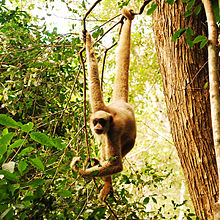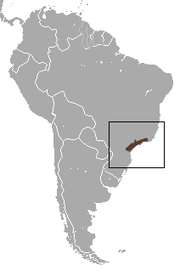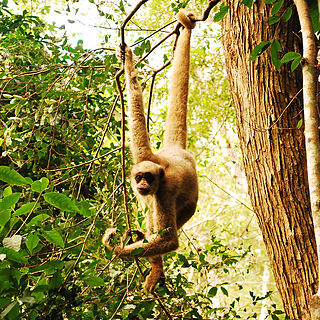Muriqui
Genus of New World monkeys From Wikipedia, the free encyclopedia
The muriquis, also known as woolly spider monkeys, are the monkeys of the genus Brachyteles.[1] They are closely related to both the spider monkeys and the woolly monkeys.[1]
| Muriquis[1] | |
|---|---|
 | |
| Northern muriqui, Brachyteles hypoxanthus | |
| Scientific classification | |
| Domain: | Eukaryota |
| Kingdom: | Animalia |
| Phylum: | Chordata |
| Class: | Mammalia |
| Order: | Primates |
| Suborder: | Haplorhini |
| Infraorder: | Simiiformes |
| Family: | Atelidae |
| Subfamily: | Atelinae |
| Genus: | Brachyteles Spix, 1823 |
| Type species | |
| Brachyteles macrotarsus | |
| Species | |
Species
The two species are:[2]
| Common name | Scientific name and subspecies | Range | Size and ecology | IUCN status and estimated population |
|---|---|---|---|---|
| Southern muriqui | Brachyteles arachnoides (É. Geoffroy, 1806) |
Brazil (Paraná, São Paulo, Rio de Janeiro, Espírito Santo and Minas Gerais) |
Size: Habitat: Diet: |
CR
|
| Northern muriqui | Brachyteles hypoxanthus (Kuhl, 1820) |
Brazil (Rio de Janeiro, Espírito Santo, Minas Gerais and Bahia.) |
Size: Habitat: Diet: |
CR
|
They are the two largest species of New World monkeys, and the northern species is one of the most endangered of all the world's monkeys.[3]
The muriqui lives primarily in coffee estates in southeastern Brazil.[4]: 174 Males are the same size and weight as females.[4]: 175
References
Further reading
External links
Wikiwand - on
Seamless Wikipedia browsing. On steroids.


